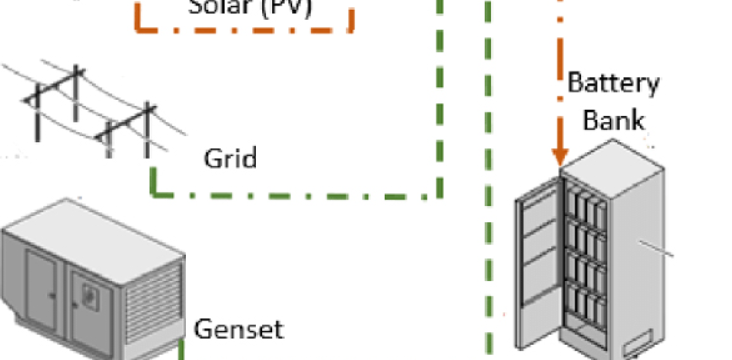Battery Backup Surge Protectors play a vital role in power systems. Its main role is to protect the battery backup from transient overvoltage impacts due to lightning, power failures or other reasons. When the system is subjected to such surge voltages, the surge protector is able to respond quickly to limit the voltage to a safe range that the battery can withstand, thus preventing the battery from being damaged or causing more serious failures. The principle of operation is based on a specific voltage response mechanism. Under normal conditions, the surge protector presents a high impedance state and has minimal effect on the circuit. However, once a transient overvoltage is detected, the impedance of the surge protector decreases rapidly, creating a low-impedance path that allows surge current to pass through and drain to ground, thus protecting the battery and other equipment from damage. In short, the backup battery surge protector provides a strong guarantee for the stable operation of the power system through its unique voltage response mechanism.
The backup battery surge protector is an important power protection device used to protect the backup battery in the power system from surge current (i.e., instantaneous ultra-high voltage). Backup batteries are widely used in critical facilities such as communication systems, security monitoring, emergency lighting, and power systems as an important power supply guarantee. Therefore, the protection of backup batteries is particularly critical, which is why backup battery surge protectors exist and are widely used.
Backup Battery Surge Protectors are mainly used to absorb and shunt transient overvoltages caused by a variety of reasons to protect the battery from damage. Surge currents may be caused by lightning, grid faults, switching operations, electrostatic discharges and many other reasons. Once the backup battery is attacked by these instantaneous overvoltages, it may cause damage to the battery, shorten its service life, and in serious cases, it may even cause fire and explosion and other safety accidents. The role of the battery backup surge protector is:
immediate response: when the circuit of the instantaneous high voltage, the surge protector can quickly respond to play a protective role in the microsecond level.
On Voltage Limit: Limit the instantaneous high voltage to the range that the battery can withstand, avoiding the battery from being broken.
Overcurrent Shunt: When there is excessive current in the circuit, the surge protector can shunt the excess current to reduce its impact on the battery.
Through these mechanisms, the battery backup surge protector is able to effectively reduce the failure rate of the power system, extend the life of the backup battery, and ensure the reliable power supply of the power system in case of emergency.

The operating principle of the standby battery surge protector is based on the fact that its internal electronics respond quickly to an instantaneous over-voltage and shunt the over-voltage to the grounding line in time, thus protecting the battery against damage. The main working principles include:
Transient diode (TVS): TVS is able to conduct quickly when encountering a high voltage, releasing the energy of the high voltage to the ground, and is therefore a common component for surge protection.
Metal Oxide Varistors (MOV): MOVs have a high resistance at normal voltages, limiting the flow of current through them; when the voltage exceeds their threshold, their resistance decreases rapidly and their conductivity increases, allowing them to quickly shunt the overvoltage.
Gas Discharge Tube (GDT): The gas discharge tube is non-conductive under normal operating voltage, but under the action of excessively high voltage, the gas dielectric is punctured and conductive, and the overvoltage is led to ground.
In the design of the power system, a surge protector is connected in series between the backup battery and other power equipment. When a surge occurs, the protector acts quickly to limit the excess voltage and prevent it from damaging circuits and equipment. Under normal conditions without a surge impact, the surge protector will have no effect on the circuit.
Selection of the appropriate backup battery surge protector and correct use is critical, the following are some of the precautions for selection and use:
Selection should be made on the basis of the battery's rated operating voltage and the system in which the possible The selection should be based on the rated operating voltage of the battery and the maximum surge voltage that the system may encounter to select the appropriate surge protector.
Consider the response time of the protector to ensure that it can shunt the electrical surge before it arrives.
Select the appropriate protector based on the grounding of the system to ensure a smooth shunt path.
Select a protector with sufficient through-current capability according to the operating current of the battery and the possible maximum inrush current.
Check the working status of the protector periodically to ensure that it functions properly at critical times.
The correct selection and installation of the backup battery surge protector can significantly reduce the risk of the power system in the face of external shocks, and protect the backup battery to operate safely and stably. In daily operation and maintenance, attention should also be paid to regular inspection and testing of the surge protector to ensure that its performance can be fully utilized at critical moments.
In short, the battery backup surge protector is indispensable for ensuring power safety and maintaining a stable power supply. Understanding its working principle and correct application is crucial for any system that requires stable power support.